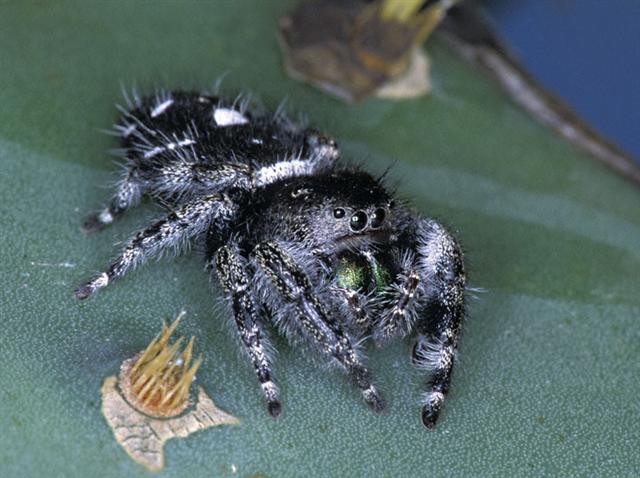
ORDER: Araneida
FAMILY: Arachnids
Any arthropods that share the same characteristics as spiders are known as arachnids. Other arachnids, or spider relatives, include ticks, daddy-long legs, scorpions, and mites. The difference between spiders and insects is that all spiders can produce silk throughout their lifetime. However, just a few insects can produce silk, and then at only certain times during their life. Spiders use silk to build webs and other types of snares and egg cases. Spiders are predators, feeding mainly on insects. Spiders are considered beneficial because of the large number of insects they prey on, including a number of pest species. All spiders have venom and are therefore venomous. However, most spiders are harmless to people. They are very shy and usually remain hidden in undisturbed areas. Many are active only at night. They are not aggressive and they will try to escape when confronted. Few spiders bite, even when coaxed. Fortunately, the bites of most spiders are less painful than an average bee sting.
Jumping spiders are common spiders outdoors and indoors. They are active during the day and are often found around windows, ceilings, walls, and other areas exposed to sunlight. these spiders are generally small to medium-size (about 1/4 – 1/2 inch long) and compact-looking. They are usually dark-colored with white markings, although some can be brightly colored, including some with iridescent mouthparts. These spiders move quickly in a jerky manor. They get their name from their ability to leap on their prey, often jumping many times their own body length. Like most spiders, these have eight eyes, of which the two middle eyes are particularly large. Jumping spiders have the best vision of spiders, seeing objects up to 8 inches away.

